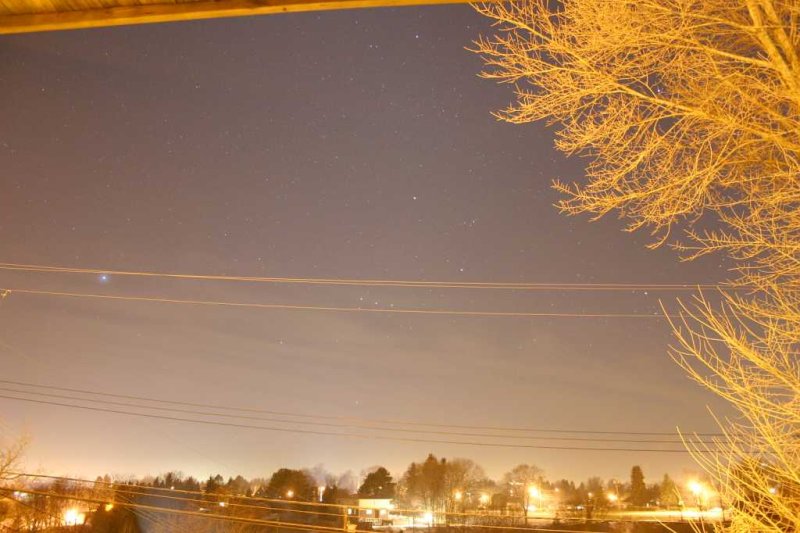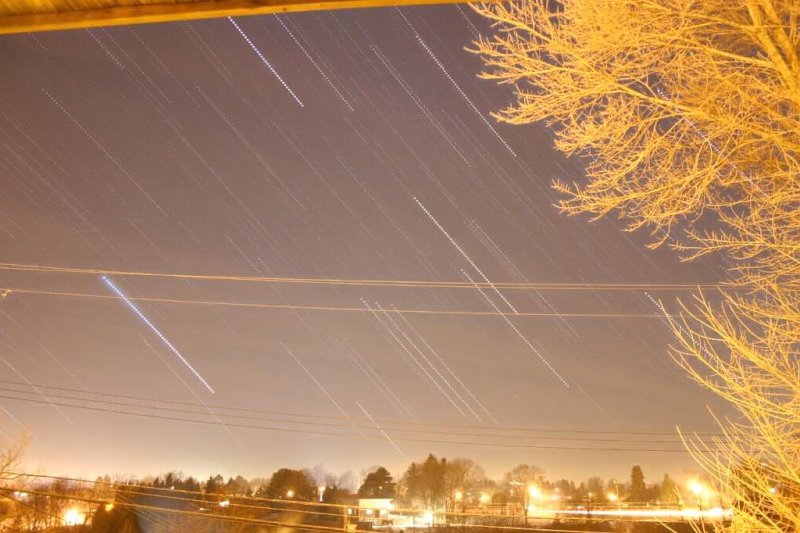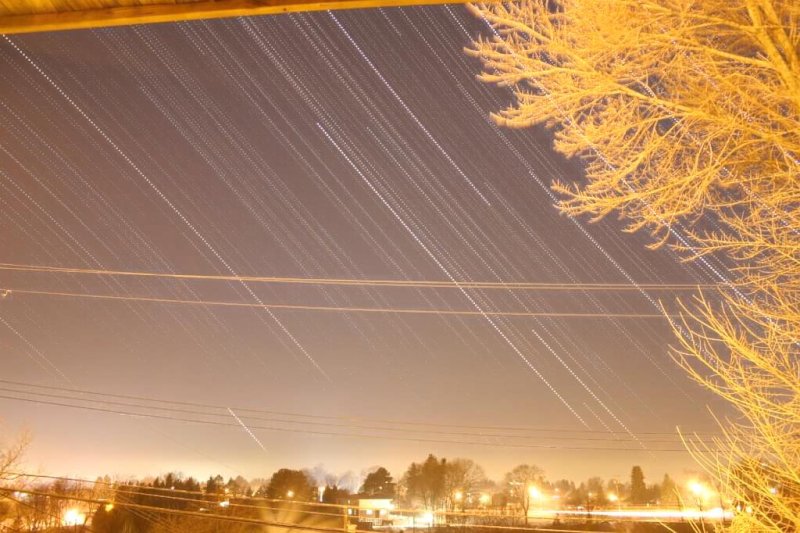
| < |
Home / |
Astronomy / |
Equipments / |
Star Trails from the City |
> |
|---|
Star Trails from the City 2005/2/6
The place I live (Green Tree, Pittsburgh) has severe light pollution. Figure 1 is a 20-second exposure of the night sky from my room. Sirius is the brightest star at left and Orion is at center. Experienced astrophotographers would know from the photo that any longer exposure the sky will be washed out.
 |
| Figure 1. A 20-second exposure shows the light pollution. |
To put them together, I perform a 'max' operation on the pixels across the images (standard stacking programs won't work since stacking is averaging which will dilute the stars). This is done with a few lines of code in Matlab. The result is quite descent. Figure 2 shows the max of 55 photos spanning 55 minutes. Sirius and Orion were setting. Figure 3 shows the max of 210 photos.
 |
| Figure 2. Max of 55 photos. Sirius and Orion setting. |
 |
| Figure 3. Max of 210 photos (3 and a half hours) |
One can also made a movie out of the photos.
| < |
Home / |
Astronomy / |
Equipments / |
Star Trails from the City |
> |
|---|